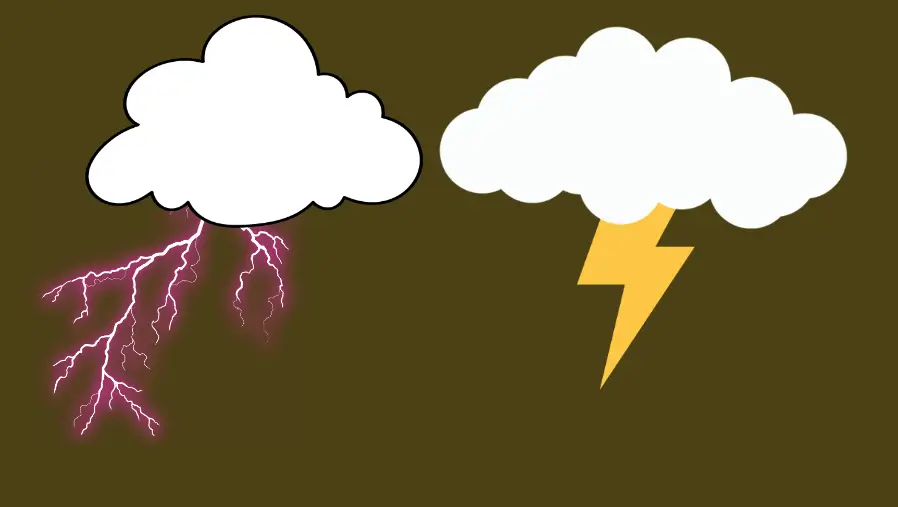How does lightning form as a strike going up or down? There are still a lot of old answers on science vlogs and other places, which has made people’s ideas about lightning worse over time. I’ve seen lightning do bizarre things. We’ll investigate and explain the strange world of light. Thunderstorms can separate pools of positive and negative charge, which makes huge electric fields.
Between two oppositely charged regions, a network of electrically conductive channels called leaders materialize and begin to tunnel a path through the poor conductive air in an attempt to neutralize the charge separation. Think of leaders as a sort of jumper cable; the leaders branch in two directions, each with opposite polarities, toward both regions. Most lightning flashes occur within the storm and are referred to as cloud flashes or intra-cloud lightning, but when one end of the bi-directional leader network connects to the ground or an object on the ground, we call it a ground flash or cloud to ground lightning, or CG for short.
In the most common CGS, a negatively charged step leader approaches the ground and the electric field between the step leader and the ground strengthens to the point that an oppositely charged positive leader is attracted to the step leader. The return stroke of the leader and all the complicated components of a lightning occurrence are together referred to as a flash. The air around lightning becomes so heated that it explodes as a supersonic shockwave that, within a few meters, transforms into an auditory wave.
This rapid expansion of air molecules creates sound waves that radiate outward about 1 mile every 5 seconds. The sound we hear is thunder. In this clip at 2,000 frames per second, you’ll notice two distinct types of leaders with different behavior. You can see the positive end of a leader scouting a path through the air, but notice the flickering segments that follow.
These leaders form on the decayed segments of highly branched positive leaders and are known as recoil leaders. Inversely, if a positive leader with a deficit of electrons connects with the ground and induced surplus of electrons in the ground travel up the channel, displacing negative charge away from the ground and into the storm, the ground gains a net positive charge, and we refer to this as a positive CG.
How can storm chasers and meteorologists discern the difference between negative and positive CGs in the field?
if directly struck, one could kill you and the other will likely kill you. it’s difficult to tell them apart visually, but many positive CGS and negative C G’s exhibit visibly different behavior. for example, after a negative CG return stroke, multiple return strokes often follow, causing the main channel to flicker. This is known as a multi-stroke CG flash.
The strobing effect is caused in part by the orientation of the storm’s charged areas. Most negative CG’s initiate between a mid-level negatively charged region and a smaller positively charged region near the base of the storm, but the return stroke of typical positive CG’s rarely flicker.
However, many positive C G’s occur in a positive pool higher in the thunderstorm and closer to the ground. Due to the greater distance the leaders have to blaze through the resisting air, the return stroke of these positive CG’s is typically much hotter, brighter, and longer in duration. These are often the most powerful CGS, reaching temperatures of up to 30,000 degrees Celsius, which is nearly five times hotter than the Sun’s surface.
Positive CGs account for just five to ten percent of all ground flashes worldwide, but they are a common sight in Tornado Alley. Typically, I observe them just downstream of powerful storm updrafts. Due to a lack of branching and strong positive leaders, many of these positive CGS have a peculiar smooth and fluid channel near the ground; we refer to this as smooth channel lightning. the visible flash is often just the channel without any branching leaders. So it’s sometimes referred to as branchless lightning, but rest assured there is leader branching. It’s just hidden in the clouds aloft.
Sometimes a bolt of lightning can leap miles away from a storm, startling earthlings. We refer to this as a bolt from the blue. Determine whether these CGS are likely positive or negative. Let’s test whether your eyes are quick enough to identify the difference in real time. It’s rather simple to spot these distinctions in slow motion. These systems include horizontally stratified charge areas that act as the conduit for lightning to reach over a hundred kilometers.
If these horizontally extensive flashes make contact with the ground, they almost always have a positive polarity and transfer enormous amounts of charge. It cause rapid changes in the electric field that can ignite another flash in a domino effect.
Upward lightning travels upward from tall objects on the ground into a storm and typically always has upward propagating positive leaders. Often, these upward leaders produce spectacular flickering from recoil leaders developing on decaying positive branches. This phenomenon is also known as ground-to-cloud lightning. Almost all upward moving flashes are triggered by a nearby lightning flash either when leader activity or return stroke occurs close to the tall object causing an abrupt change in the electric field.
Therefore, if someone asks you whether lightning strikes up or down, the answer is both. However, if they ask you how lightning works, you should simply change the subject. Not only can enormous horizontal ground flashes create upward lightning, they can also operate as parent flashes creating red sprites high above the thunderstorm in the mesosphere.
![]()
